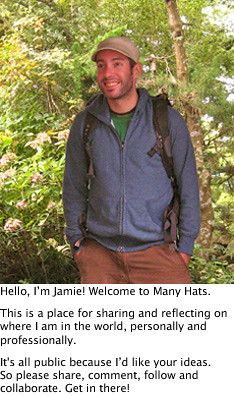Balanced Technology
I spent this weekend in Nagoya, at Nagoya International School, attending a workshop led by Kathy Short exploring learning through inquiry. Towards the end of the second day she introduced a model of balanced literacy that explored the ways in which personal inquiry, collaborative inquiry and guided inquiry mutually support student problem-solving, research, and meaning-making. Though the example focused on literacy, she contended, and I believe, that the balance could equally be applied across disciplines, inclusive of aspects of learning with technology.
My hunch is that technology differs from traditional literacies (including language and mathematical), by being more a discipline made up of a set of tools, than a vehicle for conceptual exploration. However, there’s certainly a comparison to be drawn between traditional and digital literacies. Information literacy is undoubtedly a particular field of literacy whose scope, rules and patterns differ significantly from its more linear predecessors. With that in mind, I’ve been asking myself how the model of balanced literacy proposed would translate to the digital realm, and my teaching practice.
I’ve adapted the balanced literacy model to the realm of learning to use digital technologies. I’m not really sure what to think of my model, but I do believe that the notion of balancing the three spheres of inquiry should hold true. When I consider my classroom practice in this light, I’m quite aware that I facilitate regular guided inquiry, and expect regular collaborative inquiry, but likely make insufficient space for personal inquiry. As in other elements of the curriculum, I can imagine how this imbalance and lack of time for personal exploration could have detrimental effects on student ability to be as successful in guided and collaborative efforts. In fact, I’m well aware that many of my students who are more readily successful in guided and collaborative inquiries are those who spend considerable time involved in personal tech inquiry out of class.
As discussed at length in an earlier Messing Around post, I believe fully in the need for this sort of experimental period across the curriculum. So why, I wonder, have I let it slip so much when learning digital tools? What changes can I make in my practice to allow for more personal inquiry with technology?
Related
2 Responses to Balanced Technology
Leave a Reply Cancel reply
This site uses Akismet to reduce spam. Learn how your comment data is processed.
MY CLASS BLOG
This is my classy, yet personal blog. For my less personal –but perhaps classier– classroom blogs, click here, or here.MANY HATS in your inbox
Subscribe to Many Hats...

many hats by Jamie Raskin is licensed under a Creative Commons Attribution-NonCommercial-ShareAlike 3.0 Unported License.Details… details…
CATEGORIES
@jamieraskin
My TweetsINVASION PROGRESS
HISTORY
MANY COMMENTS










Jamie, I absolutely love this diagram. There is so much potential in the visual picture this conveys for both teachers and learners with regard to technology. Like all Venn diagrams however I always struggle with the divisions and the dividers. They make useful mental models but in practice always seem to have exceptions. Speaking personally, I find I jump back and forth from one circle to another so quickly sometimes. The key for me seems to be the personal connection where I’m just playing around with stuff to see what I can do. From there all kinds of great ideas come to mind and some of the strategic exploration of technology begins. I wonder what other’s processes would look like. something tells me we’re all more similar than different when it comes to this process. Regardless, this diagram is fantastic and makes a lot of things clearer. Thanks for sharing this.
I agree totally. Actually, I only modeled this diagram in a Venn style because the one I was basing it on took that structure. You’ll note that unlike the majority of such organizers, this one has very little content in the areas of crossover. I think I find the trinity of ways of learning more compelling as a notion of branches required to achieve balance, rather than disciplines that cross over in any way to create any particular synergistic effects. More like a conceptual checklist of purposes for teaching and learning. Thanks for the comment!